I am frequently asked: what are the best books on investing? How do I develop my investment philosophy and process? How do I become a good investor? I have mentored many aspiring investors, and I also teach the Value Investing Seminar at the F.W. Olin Graduate School of Business. The investing books that I describe below have helped many aspiring investors make their journey from a beginner to an investing expert.
Learning how to become a good investor is difficult because of the:
Long feedback loop between decisions and outcomes
Behavioral biases that can negatively impact our judgment
Temperament required to remain rational under pressure
Combination of art and science needed to achieve mastery
Some choose to learn investing purely from first principles. Others attempt to become expert investors by copying previous investing masters, such as Warren Buffett. The best way to become an investing expert is to combine these approaches.
Reading even the best investing books is not enough. You need to have a process for using what you learn to develop your own investment philosophy and investment process. As you read each of these investing books, you should also be doing three things:
1. Understand – You should be able to understand the key investing ideas in each book, not just quote them. Do you understand why the master investor used the approach that he or she did? What was the historical context or investing environment that they were in? How are the different parts of the investment process related to each other?
2. Apply – Investing is not a theoretical endeavor. The most successful investors in the world have not been professors merely armed with theories, but rather practitioners who understood theory and were able to successfully apply it in practice. If you don’t practice applying the knowledge that you glean as you read these investing books, you might be left with a deceptive feeling of mastery of the material where none exists.
3. Customize – You are not Warren Buffett, Benjamin Graham or Phil Fisher. Your strengths and weaknesses are different. Your investment operation and constraints might be different. So don’t run around trying to be the next Warren Buffett. Instead, become the strongest investor that you are capable of becoming by customizing what you learn. Use the insights in these books to build your own investment process, don’t just blindly copy theirs.
The list of the best investing books presented below is in the order in which you should read them. You will increase your odds of becoming a good investor if you study each book before moving on to the next one. Don’t rush – this is not a list of easy investing books that you can master in a few weeks or even a few months. Instead, this is a path that will take most of you years to master. I have read the first book on the list, Benjamin Graham’s Security Analysis, four times in my two decades of professional investing. Each time I have learned something new, informed by the additional investing experience that I have had since the prior reading.
As you read each of these investing books, keep asking yourself these questions:
What about this approach appeals to you and what does not?
How much of the approach was influenced by the investor's personality and how much by the external environment during which they were investing?
How successful would this approach be in the current investment environment?
1. Security Analysis by Benjamin Graham
Surprisingly few investment professionals have carefully read Security Analysis. That is a mistake. Benjamin Graham lays out the foundation of value investing and then proceeds to explain how to apply it across all asset classes. Some think that because the first edition of this book was written in the 1930s that it is no longer relevant. Rest assured that it is just as relevant today as when it was first written. There is so much more in this investing book than just the net-net analysis that Benjamin Graham is sometimes known for. If you study this book carefully, you will be building your investment process on a very solid foundation.
2. Common Stocks and Uncommon Profits by Philip Fisher
Whereas Benjamin Graham bases his investment process on reversion to the mean, Philip Fisher’s approach is all about the outliers. In Common Stocks and Uncommon Profits he dives into a much more qualitative approach to value investing focused on intangible attributes such as competitive advantage, management quality and a long runway for future growth. Most value investing approaches are somewhere on the continuum between Graham’s and Fisher’s. By comparing the two you should start to learn about your own preferences in this respect.
3. Buffett Partnership Letters by Warren Buffett
Warren Buffett was Benjamin Graham’s best student. When he started his partnership in the 1950s his approach was heavily influenced by his teacher’s. Pay careful attention to how Buffett implements his investment approach and the specific examples that he provides.
4. Berkshire Hathaway Annual Letters by Warren Buffett
As Warren Buffett continued his investment operation inside of Berkshire Hathaway, his style began to evolve. Influenced by his friend Charlie Munger and by the ideas of Phil Fisher, Buffett’s investment approach underwent a dramatic evolution away from a primary focus on cheap securities towards a deep appreciation for business quality. Buffett is such a superb investor in part because he never stopped learning and evolving. Study his investment examples and pay attention to how his investment process changed over time.
5. The Money Masters by John Train
The Money Masters goes broad rather than deep into a handful of superb investors with very different approaches. That is the point – they were all very different in how they approached investing, yet they were all highly successful. This is one of the best investing books for understanding how different investors can succeed with very different investment processes.
6. The New Money Masters by John Train
The New Money Masters continues where the first book left off with a new generation of investment masters. Continue to understand the similarities and differences between the investment approaches of these practitioners and think about how that should inform your own investment process.
7. Margin of Safety by Seth Klarman
Seth Klarman has achieved a tremendous investment record at the Baupost Group. Unlike many other value investors who followed Buffett in his evolution towards quality, Klarman continues to focus on extremely cheap securities caused by forced selling, complexity and neglect. One of the key ideas in this investing book is the difference between absolute value investing and relative value investing. Klarman points out that it can be quite rational to hold cash if the current opportunity set is unattractive because doing so takes into account tomorrow’s likely opportunities.
8. You Can Be a Stock Market Genius by Joel Greenblatt
Don’t be fooled by the title – this is a serious book focused on special situation investing. Joel Greenblatt explains the different patterns that occur in the investing world, such as spin-offs, post-bankruptcies and restructurings and teaches you how to take advantage of them. One of the main points of the book is to look for investing opportunities off the beaten path where most other investors can’t (or won’t) be searching. This investing book teaches you how to do that.
9. One Up on Wall Street by Peter Lynch
Peter Lynch’s approach, like Fisher’s, focuses on primary research and on investing within areas where you have strong domain expertise. Some have misunderstood his approach to mean that all you need to do is go to the mall, see where the lines are and buy the stock of the companies that are popular with shoppers. That is not the case – investing is far more complicated than that. When I met Peter while working at Fidelity Investments early in my career, it was clear that he favored companies early in their growth cycle whose stocks had the potential to go up many-fold over the years. I vividly recall one of his points at the end of a small group lunch that I had with him: “just cheap does not work.”
10. Competitive Strategy by Michael Porter
As you become a better investor, you will realize that the path to further improvement is through becoming a better business analyst rather than learning more about financial analysis. Value investing is not about simple formulas or ratios – you need to understand the business, and its likely range of financial outcomes, deeply if you are to succeed. There is no better general framework than Michael Porter’s Five Forces analysis which helps you judge the attractiveness of an industry and the company’s competitive advantage within it.
11. The Money Game by ‘Adam Smith’
Set in the “go-go” years of the 1960s, The Money Game is both entertaining and illuminating about human behavior. We would like to think that investors are rational judges of the financials of the companies they invest in. This book reveals how different reality is and the many motivations that cause investors to behave the way that they do.
12. John Neff on Investing by John Neff
John Neff managed Wellington’s Windsor Fund with great success. Over three decades he beat the market by over 3% per year – an amazing feat for someone investing in large companies with a sizable amount of capital. The most valuable part of this book is a play-by-play description of how John implemented his process based on the journal that he kept in real time. This investing book helps bridge the gap between theory and practice.
13. Investing Against the Tide by Anthony Bolton
Anthony Bolton was instrumental in building Fidelity’s international business while generating an amazing track record for his investors. His approach combines the wisdom of a practitioner with a contrarian bent. The many examples in this book are helpful to understand how to apply investing concepts in practice.
14. Big Money Thinks Small by Joel Tillinghast
I had the privilege to work with and learn from Joel at the beginning of my career when I was a young equity analyst at Fidelity. He is an amazing investor who has beaten the market by several percent per year over a 25+ year span. Joel’s approach is all about finding good, predictable businesses and waiting until the market undervalues them for temporary reasons. Remember his admonition: most people ask the question of “what will happen next” with a company, but instead you should focus on answering the question of “what is the business worth.”
15. Capital Returns by Edward Chancellor
Edward Chancellor chronicles the insights from Marathon Asset Management on international investing. Their key insight is to understand the supply and demand cycle of each industry and use it to inform where and how to look for opportunities
16. Quality Investing by Lawrence Cunningham
Lawrence Cunningham explains why quality matters, how to identify high-quality companies, and why holding them for the long-term can be very profitable. In recent years there has been a trend in the value investing community to pay up for quality and eschew cheap securities of mediocre businesses. Whether you should follow this trend or not is up to you based on how you assess your own strengths and weaknesses, but this book is a thoughtful work that can help you decide.
17. The Most Important Thing by Howard Marks
Howard Marks is an amazing investor known for having built Oaktree into a distressed-debt powerhouse. This book is all about second-level thinking – understanding the deeper implications of what is happening, not just what is apparent on the surface. It also contains an excellent discussion on how to think about the different kinds of risk that an investor faces and how to balance the tension between the desire for a good return and the fear of a bad outcome.
18. The Investment Checklist by Michael Shearn
Talking about big investing ideas is all well and good, but that is not enough to actually succeed at investing. Michael Shearn’s book will help you answer the question of what do you actually need to do to understand a company well enough to invest. His checklist approach is particularly helpful for creating a rigorous investment process.
19. The Manual of Ideas by John Mihaljevic
John Mihaljevic has built an amazing community of value investors at MOI Global. Through it he has met and interviewed many of the best investors in the world and benefited from their insights. His book, The Manual of Ideas, is an excellent read that will help you develop a systematic process for idea generation.
20. The Intelligent Option Investor by Erik Kobayashi-Solomon
I used to think that options have no place in a value investor’s arsenal. My fear was that they were instruments of speculation, not investing. The Intelligent Option Investor will help you develop a framework for how to use options within a value investing process. Ultimately, only you can decide where options fit in your process, and this book is a great place to start formulating your views.
21. Poor Charlie’s Almanack by Charles Munger
Charlie Munger is Warren Buffett’s partner and the Vice Chairman of Berkshire Hathaway. He is also an extremely thoughtful investor whose insights helped him generate an amazing track record. He is known for his strong advocacy of using mental models from various disciplines to make better investment decisions. This collection of talks and other pearls of wisdom from Charlie is sure to help you become a better investor.
22. The Mental Game of Poker by Jared Tendler
This book is not here by mistake, even though its title will make you think it’s about poker rather than investing. After you master the intricacies of building your own investment process, the hardest part is not analytical but behavioral. You need to have the ability and temperament to remain rational and actually execute your process when the going gets tough and you are under tremendous pressure. This book lays out what is involved in improving your “mental game” and what you can do to set yourself up to be a more disciplined value investor.
If you study these investing books thoroughly and keep coming back to them after you practice applying the concepts that you learn, you should be able to become a good investor. Will you be the next Warren Buffett? No set of books on investing can promise that. However, with careful reading, rigorous study and practice you are going to become the best possible investor that you can be, and that is all anyone can ask for from a list of books on investing.
If you liked this article, please “like” and share this article. If you are interested in learning more about the investment process at Silver Ring Value Partners, you can request an Owner’s Manual here.
About the author
Gary Mishuris, CFA is the Managing Partner and Chief Investment Officer of Silver Ring Value Partners, an investment firm that seeks to apply its intrinsic value approach to safely compound capital over the long-term. He also teaches the Value Investing Seminar at the F.W. Olin Graduate School of Business.
Note: An earlier version of this article was published here.

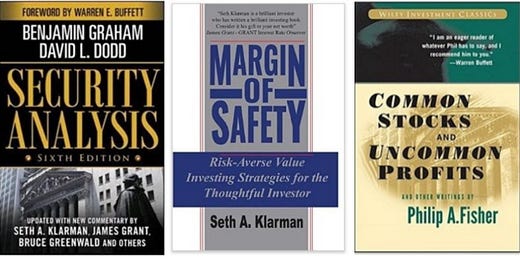



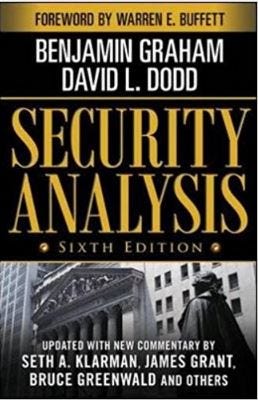
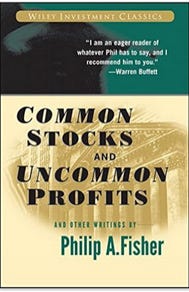
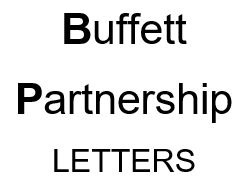


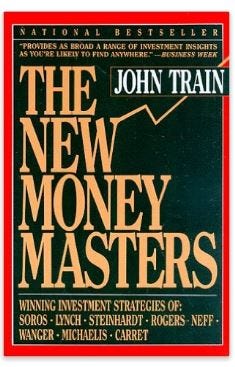


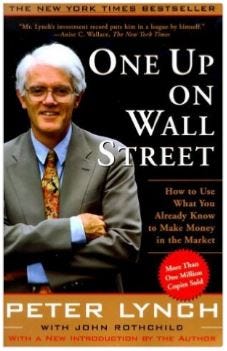






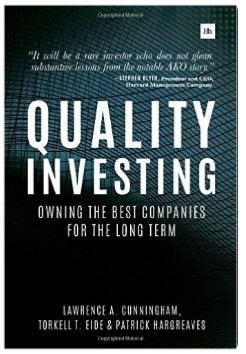
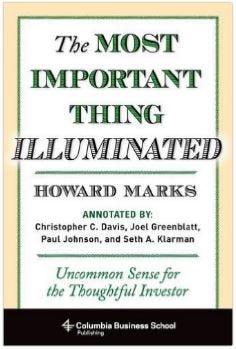
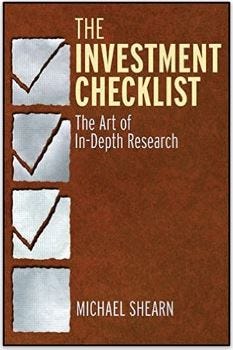
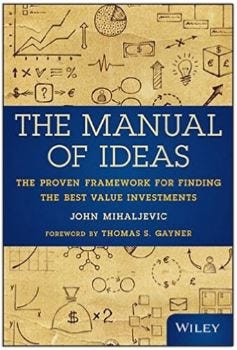
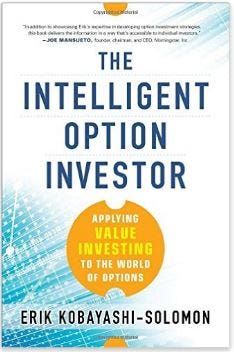
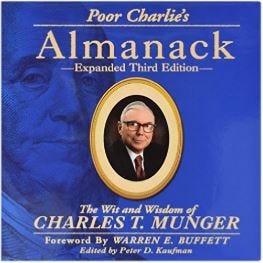
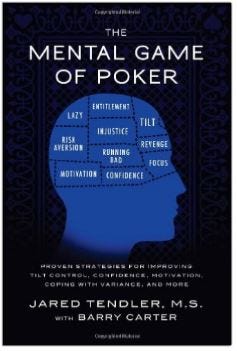

Richer, Wiser and Happier by William Green should also be on the list. Highly recommended 👍
Thank you for sharing this list Gary. It is as thorough as I should have expected. Liked the inclusion of John Neff. Best from Las Vegas